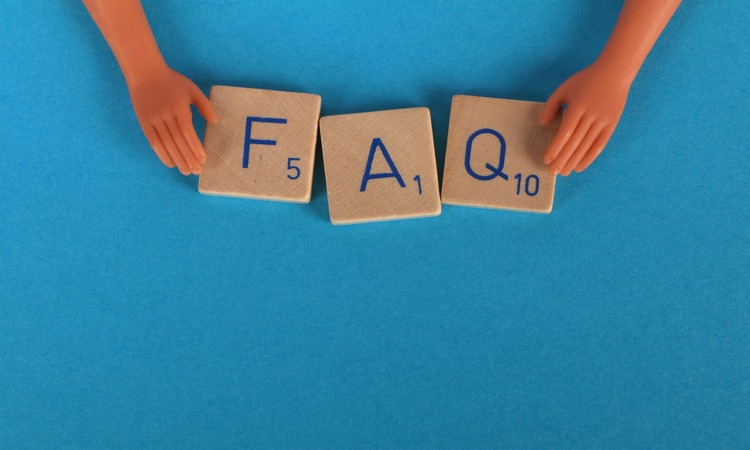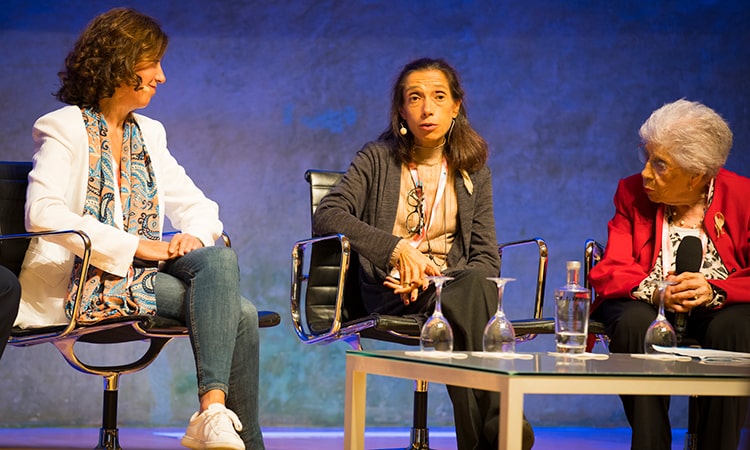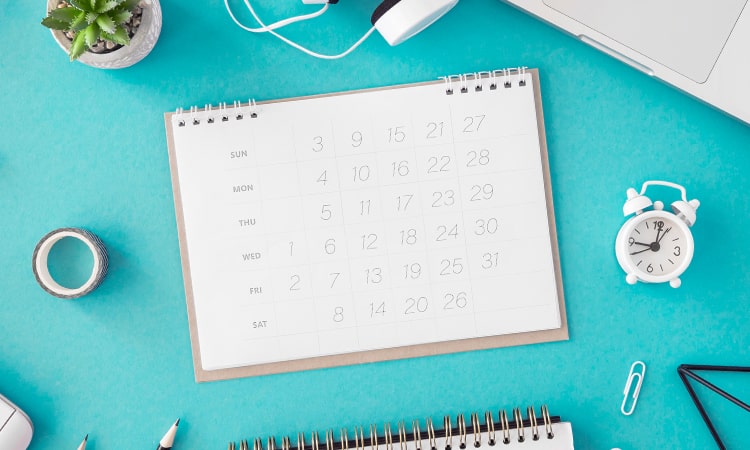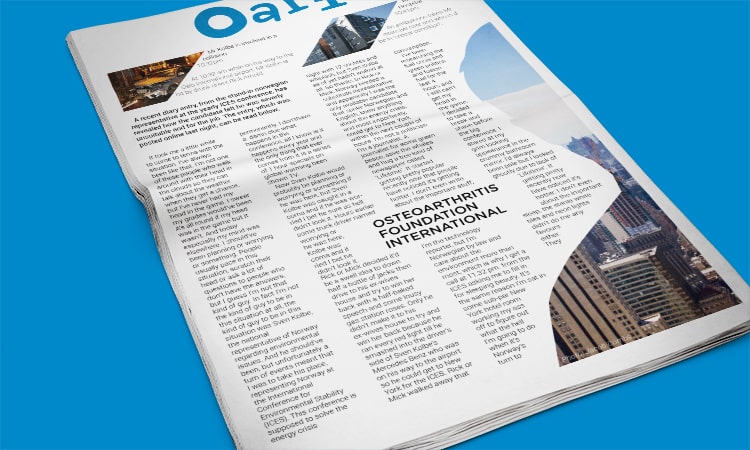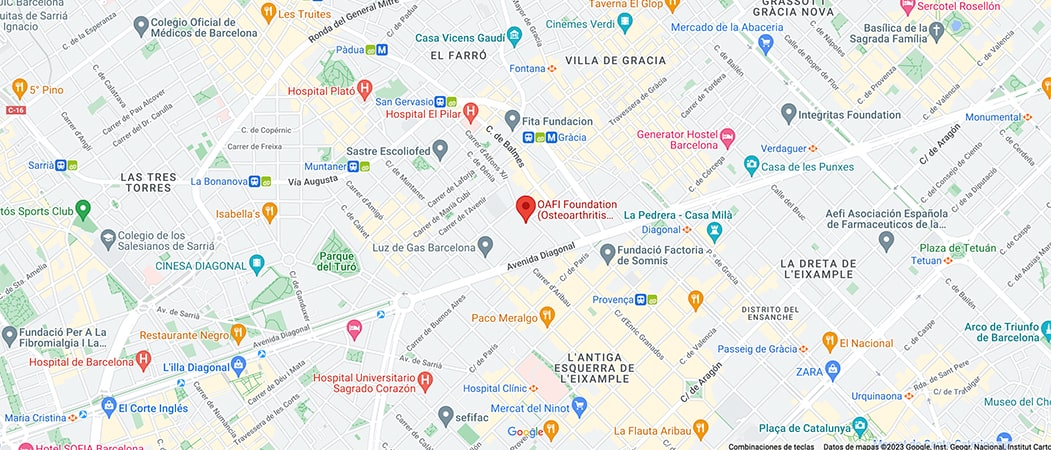- Foundation
- Actions
- Osteoarthritis
- Actuality
- OAFI Radio/TV
- Get Involved
- Contact
OAFI
Osteoarthritis International FoundationC/ Tuset, 19 · 3º 2ª
08006 Barcelona
(+34) 931 594 015
info@oafifoundation.comSchedule:
Monday-Thursday 9AM-6PM
Friday 8AM-3PM
-

-

-

Christmas: How to look after yourself and enjoy your holiday meals
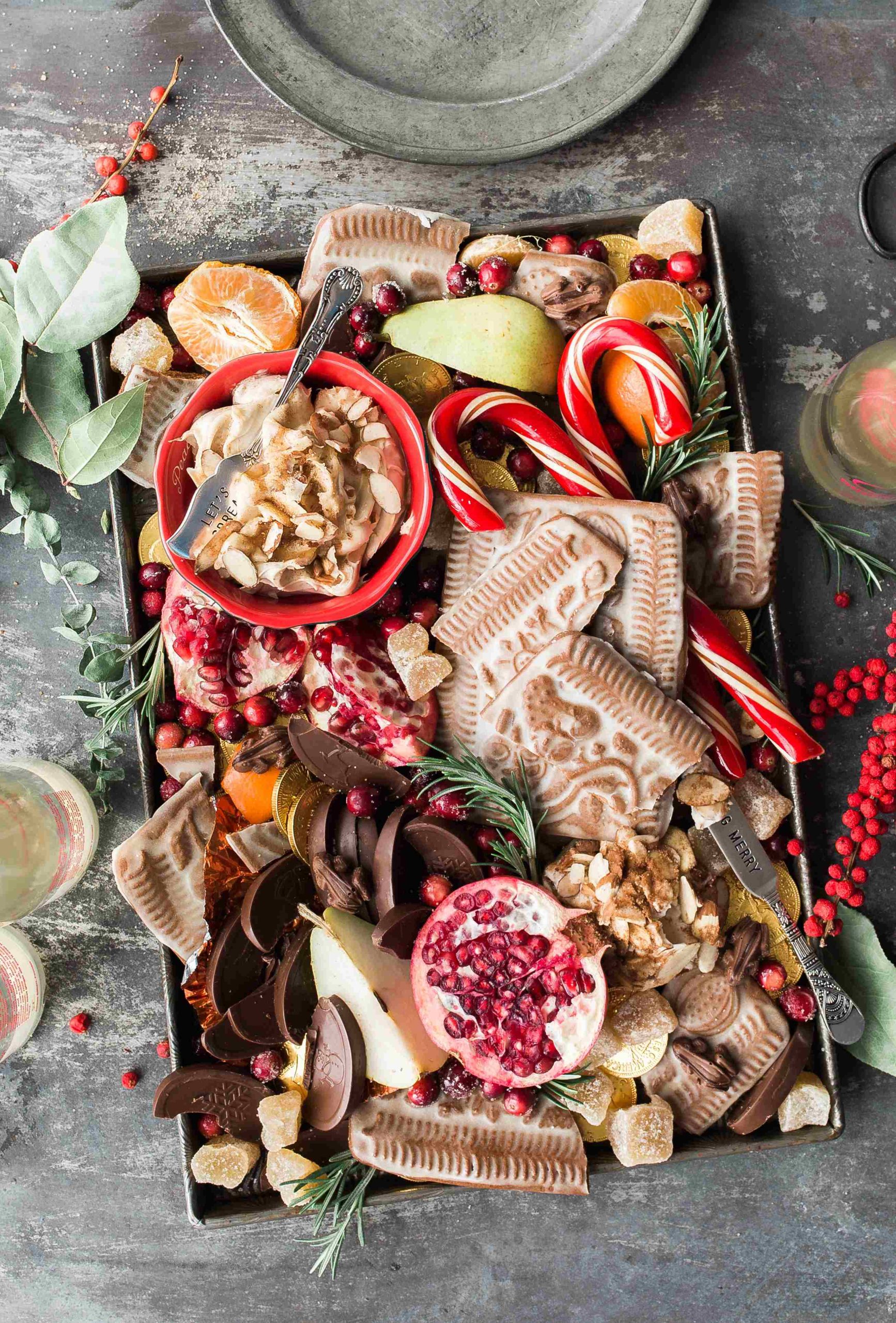
Article by courtesy of Laura Isabel Arranz , PhD in food and nutrition, pharmacist and dietician-nutritionist.
Christmas is a time of emotion and special days to enjoy and share with our loved ones around a table. The emotional and social side of food is important, but we must be careful not to overindulge in excesses that can take their toll on us at the end of these magical days.
The aim is to enjoy Christmas meals without negative consequences for our weight and health, and to maintain good joint health.
Here are five tips that may help you:
TIP 1: Selecting what and how much to eat
The ideal thing to do when we are in front of a celebratory table full of delicious starters or appetizers, main courses and desserts, is to select what we like the most and what we are going to eat and serve ourselves the portion we are going to eat, avoiding eating unconsciously. If we want to eat something else afterwards, no problem as long as we are conscious.
TIP 2: More vegetables and fish
If we don’t lose sight during these days of the fact that vegetables should predominate in our diet and, as a source of protein, it is better to choose fish instead of meat, we will have a lot going for us.
With vegetables and fish in our choices we will be lowering the caloric content of our meals by 50% or more.
Plus, of course, we will be getting more vitamins and minerals to help us feel more vital. Vegetables can be present in different forms:
- Appetizers: peppers, mushrooms, asparagus, hummus with vegetable crudités, kale chips, olives, gherkins, etc.
- First courses: delicious and appetising creams or soups, grilled or baked vegetables, timbales, salads and even vegetable cannelloni or lasagne.
- Side dishes: sautéed, roasted or grilled vegetables, or even in the form of sauces.
TRICK 3: Starters and light meals
There are many good suggestions for starters that are much lower in calories than other options we are used to using. The winners here are seafood, crustaceans and vegetables! And the more we avoid cold meats and cured cheeses, the better.
The most caloric starters are those based on very fatty cheeses, fried foods, tempuras, tartlets, vol-au-vents, montaditos, empanadas, fritters, croquettes, potato chips, etc. This does not mean that we cannot have some of these delicacies, but they should not be the predominant ones:
Tip: Moderate the quantity of the most caloric snacks or really avoid them if with other lighter options we already feel satisfied.
For main courses my advice is to look for recipes beyond cannelloni and red meat, because, although these are very tasty, so are other dishes with healthier foods and preparations.
- For the first course we could opt for Christmas soups or broths, vegetable consommés or salads combining, for example, winter vegetables such as endive or chicory with seafood to give them a sophisticated touch. It is also a good time for artichokes and mushrooms, which can fit perfectly into Christmas recipes.
- For the second course we will opt for fish, from a good hake to monkfish, salmon, sea bass or turbot, whichever you like best! With many fish, the ideal preparation is in the oven, but we can even think about preparing them with light sauces such as homemade tomato sauce, sanfaina, salsa verde, lemon sauce or avocado sauce.
TRICK 4: Minimalist desserts and sugars
On many occasions we are able to moderate ourselves during lunch or dinner and the problem comes when it is time for dessert and after dinner. This is when we should apply trick 1, enjoying the excitement of a sweet that we like, but “without losing our way”. This time of the Christmas meal is the most complicated and, in addition, sugars spoil our health and the maintenance of our body weight. For this reason, we must assess what we like the most, to select what we are going to eat and do it consciously and slowly. We can avoid dessert if we know that we are going to have a piece of nougat and/or polvorón later or, on the contrary, if we have had the special Christmas dessert, avoid or be very moderate with after-dinner sweets.
A wafer can only provide us with 20kcal and a polvorón with 200kcal, ten times more, so it is better to eat 1 “polvorón” (spanish sweet) and a few wafers rather than the other way around 😉.
It will also be very useful to avoid or moderate the liquor that usually accompanies them, as alcohol is nothing but empty calories. To achieve this, it is ideal to have the invaluable help of herbal teas which, as well as helping our digestion, are good allies to keep us entertained and prevent us from continuing to nibble at the table.
Anything goes when it comes to herbal teas, from those that aid digestion, such as peppermint, lemon verbena, mint, those that help to eliminate flatulence such as aniseed, fennel, cumin or star anise, or those that are somewhat stimulating, such as tea.
TRICK 5: Get back on track
During and after the Christmas “extras” it is best to get back to good habits. It is a mistake to think that once we have overdone it doesn’t matter if we overdo it a little more. All we end up doing is adding extra calories meal after meal and even day after day over the festive season and the result can be undesirable.
If we have overdone it at lunch or dinner, we can compensate during the following days with lighter meals, eating vegetables, vegetable broths or salads as a first course or even as a main course. And once the whirlwind of the festive season has passed, the best thing to do is to return to a healthy, balanced diet, even in the first week, trying to make it a little lighter, with more vegetables, less processed foods, no sweets and less bread than usual.
One of the main mistakes to avoid is to continue eating Christmas sweets with the excuse that there are leftovers. To avoid this, the ideal is to have bought just the right amount so that there is no surplus at home.
IN A NUTSHELL: 10 MUST-KNOW TIPS
- Snack and eat with enjoyment and in a conscious way so that the quantities we eat are not excessive (try not to repeat).
- Choose low-calorie starters (vegetables, mushrooms, seafood, etc.).
- Choose fish and seafood for main courses. And, if we choose meat, preferably white meat (chicken, turkey, rabbit) and cooked in the oven.
- Eat as little bread as possible and if possible wholemeal bread.
- Eat slowly and enjoy conversation.
- Do not drink sugary soft drinks or excessive alcoholic drinks, but rather natural or sparkling water, tonic, non-alcoholic beer or, if you feel like it, a normal beer or a glass of wine.
- With desserts and nougat, rationalise quantities, selecting 2 or 3 pieces to eat only what we like best.
- Before and after a Christmas lunch or dinner, try to keep the rest of the day’s meals light with fruit, vegetables or yoghurt.
- After Christmas, get back to normal as soon as possible, and for the first week follow a light diet based on vegetables in the form of salads, vegetable creams, broths, fish, eggs and white meat.
- Drink around 1.5-2 litres of water a day and do a little more physical activity.
The holidays are to be enjoyed, in all aspects and with all the senses, and small excesses, always in the right measure, are within the concept of healthy eating while still having fun, of course!
Happy and healthy 2024! 😊
Article by courtesy of Laura Isabel Arranz , PhD in food and nutrition, pharmacist and dietician-nutritionist.
Photo by Brooke Lark on Unsplash











